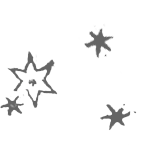An Artful Observation of the Cosmos
The Sky at Night
The wonder of the sky at night is common to science and to art. From the Renaissance to the dawn of the modern age, art and science fuse together in the representation of the stars and constellations. These star maps combined state-of-the-art scientific observation of the cosmos with artistic and cultural representations of the sky at night.
Browse Items on Display
|
Atlas of the Starry Heavens Littrow, Joseph J. von (1839) Von Littrow, Director of the Vienna Observatory, adopted Bode’s constellation figures and star positions. In von Littrow’s atlas, the constellation figures appear faintly in the background. |
 |
|
|
Celestial Atlas, 1729 Flamsteed, John (1729) A globe maker for the French royal family, J. Fortin, prepared this edition of Flamsteed’s celestial atlas in a much reduced format. Flamsteed was the first Astronomer Royal, who oversaw the building of the Greenwich Observatory. Newton relied upon Flamsteed’s star positions in his Principia. |
 |
|
|
Celestial Globe Gores Coronelli, Vincenzo (1693; reprint ca. 1800) Coronelli, a Franciscan theologian and astronomer who worked in both Italy and France, was a founder of modern geography and an influential maker of celestial and terrestrial globes. |
 |
|
|
Essays of the Members of the Academy of Gelati (1671) This is the scarce first edition of writings by a leading learned society in Bologna, the Accademia dei Gelati. The volume includes striking woodcuts by the astronomer Geminiano Montanari of white stars against a black background. |
 |
|
|
Introduction to Astronomy, 1489 Abu Ma'shar, (1489) Abu Ma’shar, an astronomer in 9th century Baghdad, was one of the most prolific writers on astrology during the Middle Ages. This work was cited by Albert the Great, Roger Bacon, Pierre d’Ailly, and Pico della Mirandola, among others. |
||
|
Map of the Heavens Bode, Johann (1801) This beautiful atlas fused artistic beauty and scientific precision. |
 |
|
|
Measuring the Heavens Bayer, Johann (1661) In contrast to Piccolomini, who omitted constellation figures in favor of scientific accuracy, Bayer superimposed constellation figures upon the star maps without compromising positional accuracy. These figures were artfully drawn by Alexander Mair. |
 |
|
|
On the Fixed Stars Piccolomini, Alessandro (1540) In contrast to the constellation figures in Hyginus and Abu Ma’shar, Piccolomini created a star atlas, measuring the positions of the stars according to an indicated scale (specific to each plate). He designated stars by Roman letters (a, b, c, etc.) in order of apparent brightness. |
 |
|
|
On the New Star in the Foot of the Serpent Handler Kepler, Johann (1606) Kepler’s star map shows the constellations of Ophiuchus (the Serpent Handler), Sagittarius and Scorpius. The Milky Way runs diagonally down from the left, and the “ecliptic,” or annual path of the Sun, runs horizontally through Sagittarius and Scorpius. |
 |
|
|
On the Revolutions of the Heavenly Spheres, 1566 Copernicus, Nicolaus (1566) Copernicus argued that the Sun rather than the Earth lies in the center of the universe. The Earth moves as a planet around the Sun, carrying its Moon along as a satellite. In 1543 little proof was available that the Earth moves; there were many reasons not to accept it. |
||
|
Theater of Comets Lubieniecki, Stanislaw (1666-68) The search for comets, charged with astrological meaning, stimulated careful scrutiny and revision of maps of the stars. Lubieniecki collected an anthology of cometary reports, attempting to describe every known comet observed in Europe up to 1665. |
||
|
Works, Ptolemy Ptolemy, (1541) For this first edition of Ptolemy’s collected works, Johann Honter drew constellation figures after the manner of Albrecht Dürer. The figures appear in contemporary dress rather than in a classical style. |
 |
|
|
The Firmament of King Sobiesci, or Map of the Heavens Hevelius, Johann (1690) The Uranographia of Hevelius, the most detailed and influential celestial atlas of the 17th century, contains 54 beautiful double-page engraved plates of 73 constellations, and 2 oversized folding plates of planispheres. |
||
|
Urania's Mirror with A Familiar Treatise on Astronomy Aspin, Jehoshaphat (1825) Constellation figures remained popular in education, as in these constellation cards which make learning the constellations easy. The set includes 32 cards, each focused upon one or a few constellations. |
||
|
An Astronomical Catechism Whitwell, Catherine (1818) This dialogue between a mother and her daughter offers a delightful introduction to the night sky. It contains 23 engraved plates drawn by Whitwell herself, including four hand-colored folding plates. |
 |
|
|
A Geographical Map of the Terraqueous Globe Scherer, Heinrich (1700) These are gores for a small geographical "pocket" globe. |
 |
|
|
Astronomical Poem Hyginus, (1485) Greek writers compiled ancient stories of the constellations, often in poetic form, with memorable instructions for locating bright stars and zodiac constellations. Constellations of the zodiac contain the wandering courses of the planets and the annual path of the Sun. |
 |
|
|
Preliminary Discourse for Astronomy Hevelius, Johann (1690) In the Prodromus, Hevelius explained the instruments and methods used to produce the star catalog. Hevelius’ Gdansk observatory, “Stellaburg,” was the best in Europe until the later national observatories of France and Britain. |





